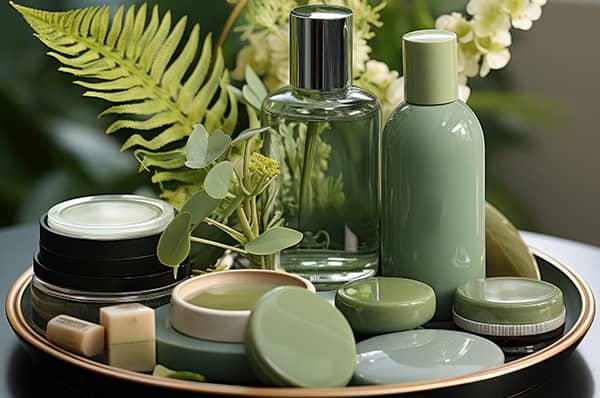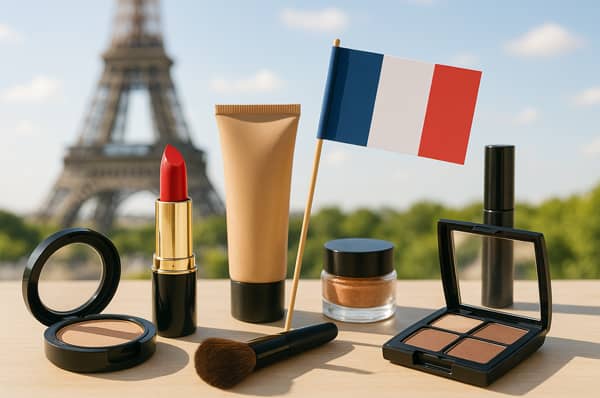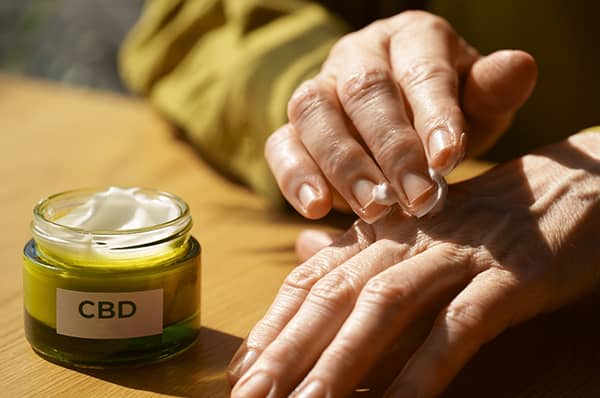Innovations in “Green” Formulations: How to Achieve Sustainable & Regulatory-Compliant Cosmetics
The cosmetics industry is evolving rapidly, reshaped by increasing environmental awareness, consumer scrutiny, and regulatory demands. At the heart of this transformation are “green” formulations—products developed with a commitment to sustainability at every stage, from ingredient sourcing to disposal. Yet for a brand, formulating sustainably is only part of the challenge. To succeed long-term, these innovations must also stand up to regulatory compliance and scientific scrutiny.
Waterless Beauty Is More Than a Trend
Waterless beauty has emerged as one of the most impactful sustainability trends. Products such as shampoo bars and solid conditioners eliminate or drastically reduce the use of water, which typically makes up 60% to 85% of traditional liquid formulations.
By removing water, these products reduce the need for preservatives, lower the product’s weight and size (reducing transportation emissions), and often come in biodegradable or recyclable packaging. Moreover, consumers are becoming increasingly receptive to the concentrated, travel-friendly formats waterless cosmetics offer.
However, formulating without water also brings unique technical challenges. Texture, user experience, and solubility must be carefully engineered, and microbiological safety remains essential. Even without water in the formulation, residual moisture from consumer use or environmental humidity can promote microbial growth. Brands must validate their microbial preservation strategy, especially under EU Cosmetic Regulation (EC) No 1223/2009, which mandates safety assessments and stability testing for all cosmetic products.
Upcycled Ingredients: Circular Innovation in Action
Upcycling has moved from niche trend to mainstream strategy. It transforms food and agricultural by-products that previously were discarded into valuable cosmetic ingredients. Consider a certain skin cleanser which features surplus carrots from the food industry or a hydrating serum that integrates upcycled strawberry seed oil and blueberry extract, both sourced from juice and jam production waste.
These ingredients offer tangible environmental benefits by reducing waste and maximizing resource efficiency. They also support storytelling that resonates with conscious consumers. But their regulatory assessment is complex. Each ingredient must be fully characterized for chemical composition, microbial contamination, heavy metals, and allergens. Any potential variability between batches must be addressed to ensure product consistency and safety.
Navigating Regulatory Expectations
Cosmetic regulations have not been crafted specifically for sustainability, yet they create a framework that either enables or restricts green innovation. In the European Union, the cornerstone regulation Cosmetics Regulation (EC) No 1223/2009, demands robust safety data, GMP compliance, and accurate product claims. Sustainable ingredients, even if natural or biodegradable, cannot bypass toxicological risk assessments. The same applies in the United States, where the FDA requires cosmetic safety substantiation and enforces against misbranded or adulterated products.
One area where regulation intersects directly with sustainability is packaging. The Regulation (EU) 2025/40 on packaging and packaging waste (PPWR) newly replaced the EU’s Packaging and Packaging Waste Directive (94/62/EC), promotes recycling rates and minimum recycled content, as well as requirements for the reusability of packaging. France’s Anti-Waste for a Circular Economy Law (AGEC) goes further, requiring specific environmental labelling of packaging and penalizing misleading environmental claims.
As regulatory focus increases, sustainability no longer exists in a grey zone. Regulatory authorities are beginning to scrutinize “eco” and “green” marketing terms with the same rigour as therapeutic claims. Companies without robust substantiation now face real legal and reputational risks.
Avoiding Greenwashing by Proving the Claims
The rise of green consumerism has led to a proliferation of sustainability claims. “Biodegradable,” “non-toxic,” “natural,” “vegan,” “climate-neutral,” and “cruelty-free” are frequently found on packaging, but not all are supported by data or defined by law.
In the EU, the Unfair Commercial Practices Directive (2005/29/EC) prohibits misleading environmental claims. In the US, the FTC’s Green Guides outline expectations for claim substantiation, such as requiring scientific evidence to back biodegradable or carbon-neutral claims. Even voluntary eco-labels such as ECOCERT, COSMOS, or Cradle to Cradle Certified impose strict documentation requirements for sourcing, processing, and biodegradability.
To avoid greenwashing, companies must implement clear internal processes to validate all claims. This includes:
- Technical documentation proving ingredient origin and environmental impact
- Lifecycle assessment (LCA) to quantify emissions, energy use, and waste
- Peer-reviewed studies or test reports to support biodegradability or compostability
- Third-party certification audits where possible
Life Cycle Assessment: The Reality Check
One of the most valuable tools for substantiating “green” innovation is Life Cycle Assessment (LCA). LCA evaluates the environmental impact of a product throughout its lifecycle, from raw material extraction and manufacturing to transportation, use, and disposal. This quantitative approach can reveal unexpected hotspots. For example, a product with biodegradable packaging might still have a high carbon footprint due to energy-intensive manufacturing or ingredient sourcing from deforested regions.
An LCA may reveal that switching to a bio-based plastic reduces fossil resource use but increases water consumption or land-use impact. These trade-offs are critical to making informed decisions that align with sustainability goals, rather than relying on superficial eco-claims.
Some brands now publish environmental and social product profiles, using internal LCA tools to compare the sustainability footprint of products. While not mandatory, such transparency is becoming a competitive differentiator.
Responsible Sourcing Goes Beyond the Ingredient
Sustainability extends beyond ingredient selection. The origin, harvesting method, labour practices, and biodiversity impact of raw materials are all under growing scrutiny. For botanical and natural ingredients especially, traceability and ethical sourcing are central to compliance and brand integrity.
In the EU, cosmetics businesses are expected to demonstrate due diligence under the European Green Deal and the forthcoming Corporate Sustainability Due Diligence Directive. This includes identifying environmental and human rights risks in the supply chain and taking corrective action. Brands operating internationally must also consider local laws, such as Germany’s Supply Chain Due Diligence Act or California’s Transparency in Supply Chains Act.
Credibility Is the New Currency
Achieving truly sustainable and compliant formulations requires close collaboration across departments—R&D, regulatory affairs, procurement, marketing, and quality assurance. Compliance must be integrated from concept through commercialization. This means engaging regulatory experts early in the product development process and aligning innovation goals with legal feasibility.
Brands that succeed in this space are those that build systems to continuously evaluate their environmental impact, engage transparently with their stakeholders, and adapt quickly to emerging policy shifts.
The future of green cosmetics will be defined not just by novel ingredients or eye-catching claims, but by demonstrable integrity. Regulatory alignment and scientific validation are no longer optional but are prerequisites for credibility in a world of rising environmental accountability.
“Green” Formulation is Here to Stay
“Green” formulation is no longer a niche or a luxury, it is becoming the default expectation in the cosmetics industry. Brands that commit to sustainability through traceable sourcing, verifiable claims, and regulatory compliance not only align with consumer values but also de-risk their innovation strategy. Whether waterless, upcycled, biodegradable, or ethically sourced, sustainable cosmetics must stand up to both environmental and legal standards. Those that do will shape the future of beauty—one that respects people, the planet, and the rules that protect both.




